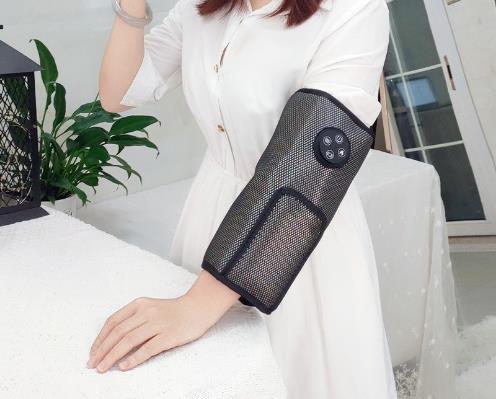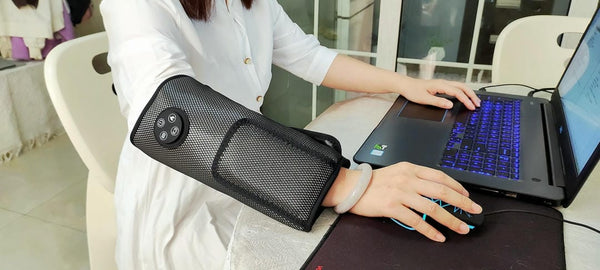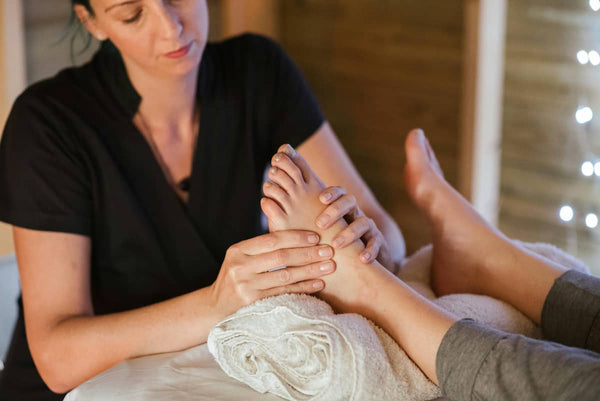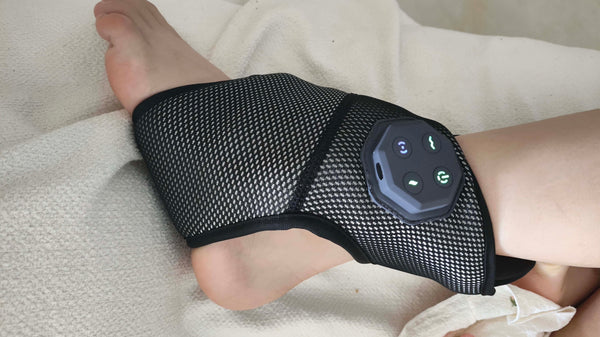 In the world of sports rehabilitation and fitness, recovery is just as crucial as the training itself. For years, the humble foam roller has been the go-to tool, praised for its affordability and basic effectiveness. But as our understanding of muscle physiology deepens, a question arises: is this simple cylinder truly the pinnacle of recovery technology? Many athletes and active individuals are finding that while foam rolling has its place, it often falls short in providing targeted, deep, and multifaceted relief. This has paved the way for a new generation of advanced recovery tools.
In the world of sports rehabilitation and fitness, recovery is just as crucial as the training itself. For years, the humble foam roller has been the go-to tool, praised for its affordability and basic effectiveness. But as our understanding of muscle physiology deepens, a question arises: is this simple cylinder truly the pinnacle of recovery technology? Many athletes and active individuals are finding that while foam rolling has its place, it often falls short in providing targeted, deep, and multifaceted relief. This has paved the way for a new generation of advanced recovery tools.
The conversation is shifting from just rolling out sore muscles to actively enhancing the healing process. The limitations of foam rollers—their difficulty in targeting specific joints like the knee, the risk of improper use, and their lack of technological sophistication—have created a clear need for something more. This is where the modern electric muscle massager enters the picture, promising not just relief, but a smarter, more efficient path to recovery.
The Foam Roller: A Foundational Tool with Limits
Let's be clear: foam rollers aren't without merit. They are a cost-effective entry point into the world of self-myofascial release, the practice of applying pressure to muscle knots or trigger points to ease tension. For broad muscle groups like the quads or hamstrings, a foam roller can help increase blood flow and improve flexibility. From my experience, many beginners find them to be a useful first step in taking control of their post-workout soreness and it's a really, really common starting point.
However, the praise often stops there. The central dispute point—its effectiveness for tricky areas like knee soreness or the iliotibial (IT) band—highlights its significant drawbacks. Using a foam roller correctly requires a degree of technique, balance, and body awareness that many beginners lack. Applying pressure incorrectly can aggravate inflammation or even cause bruising. Furthermore, its blunt, one-size-fits-all approach makes it nearly impossible to provide the precise, targeted relief that a complex joint like the knee requires. Overuse or improper form is a genuine risk that can set back, rather than advance, your recovery journey.
The Evolution of Recovery: What is a Modern Muscle Massager?
A modern electric muscle massager represents a significant leap forward from passive tools. It's not just a device; it's an active therapeutic system designed to deliver targeted and multi-faceted treatment. Unlike a foam roller that relies solely on your body weight and manual movement, these devices use technology to create a therapeutic effect. This can range from percussive therapy (massage guns) to dynamic air compression and targeted heat application, often combined within a single, intelligent device.
These tools are engineered for precision and efficiency. Imagine trying to release a specific trigger point deep within your calf with a bulky foam roller versus using a device designed to apply consistent, deep pressure exactly where you need it. The core idea is to move beyond simple pressure and integrate proven therapeutic modalities like heat (thermotherapy), compression, and vibration to create a synergistic effect that accelerates the body's natural healing processes. This is a fundamental shift from manually 'crushing' muscle knots to intelligently persuading them to release.
A Head-to-Head Comparison: Foam Roller vs. Electric Muscle Massager
To truly understand the difference, a direct comparison is necessary. While both tools aim for muscle massage, their approach, effectiveness, and user experience are worlds apart. Seeing the features side-by-side helps clarify why so many are upgrading their recovery kits.
| Feature | Foam Roller | Electric Muscle Massager |
|---|---|---|
| Precision | Low; difficult to target small muscles or specific trigger points. | High; designed for precise, targeted application on specific areas. |
| Technique Required | High; risk of improper form leading to injury or ineffectiveness. | Low; generally intuitive point-and-press operation with guided modes. |
| Therapeutic Modalities | Pressure only. | Multiple (e.g., heat, air compression, red light, vibration). |
| Convenience & Portability | Often bulky and requires floor space. | Varies, but many are portable and can be used while seated. |
| Safety | User-dependent; risk of over-pressuring or rolling on sensitive areas. | Often includes built-in safety features like auto shut-off timers. |
| Cost | Low. | Higher initial investment. |
The Benefits of Upgrading Your Recovery Toolkit
For any athlete focused on performance, understanding how to speed up muscle strain recovery is paramount. This is where an electric muscle massager truly shines. The integration of multiple therapies provides benefits that a simple roller cannot match. Heat, for example, increases blood flow (vasodilation), delivering more oxygen and nutrients to damaged tissues while helping to flush out metabolic waste. This alone can significantly reduce soreness and stiffness.
When you combine heat with dynamic air compression, you get an even more powerful effect. The rhythmic squeezing and releasing action mimics the pumping of a manual lymphatic drainage muscle massage, further enhancing circulation and reducing swelling. For those seeking deep tissue massager muscle pain relief, the consistent and adjustable intensity of an electric device surpasses the often inconsistent pressure of a foam roller. This makes it an invaluable tool not just for recovery, but also for warming up muscles pre-workout and maintaining tissue health long-term.
- Enhanced Blood Circulation: Heat and compression work together to bring nutrient-rich blood to the muscles.
- Targeted Pain Relief: Precisely address trigger points and sore spots without affecting surrounding areas.
- Reduced Inflammation: Improved circulation helps to clear out inflammatory byproducts more efficiently.
- Greater Convenience: Use it while relaxing on the couch or at your desk, without the need for awkward floor exercises.
- Improved Safety and Consistency: Automated modes and safety features ensure you get a consistent, safe treatment every time.
What to Look For: The Best for Muscle Care in Athletes
 When selecting a modern muscle massager, especially for sports rehabilitation, it's important to look beyond the marketing and focus on the features that deliver tangible results. The goal is to find a device that fits your specific recovery needs. Don't just grab the first one you see; consider what will provide the best for muscle care over the long haul. A good device is an investment in your physical well-being and athletic longevity.
When selecting a modern muscle massager, especially for sports rehabilitation, it's important to look beyond the marketing and focus on the features that deliver tangible results. The goal is to find a device that fits your specific recovery needs. Don't just grab the first one you see; consider what will provide the best for muscle care over the long haul. A good device is an investment in your physical well-being and athletic longevity.
Think about what your body needs most. Are you dealing with surface-level soreness or deep, persistent knots? Do you need something for a specific joint, like a knee, or a more general tool? Here are some key factors to consider:
- Combined Therapies: Look for devices that offer more than one function. A muscle massager with heat and air compression, for instance, offers a more holistic treatment than one with vibration alone.
- Adjustability: The ability to control the intensity of heat and pressure is crucial. Your needs will vary day-to-day, and a one-size-fits-all approach is rarely effective.
- Design and Ergonomics: Is the device easy to use on the part of your body that needs it most? For knee pain, a wrap-around design is far superior to a handheld gun.
- Portability and Battery Life: If you plan to take it to the gym or travel with it, consider its size, weight, and how long a single charge lasts.
While the foam roller served as a valuable, low-cost introduction to self-care, it is no longer the undisputed champion of muscle recovery. Technology has provided us with far more sophisticated, effective, and safer alternatives. For athletes and anyone serious about their physical well-being, the modern electric muscle massager offers a superior solution for targeted pain relief, reduced inflammation, and accelerated recovery. Investing in an advanced muscle massage tool is an investment in your body's ability to heal, perform, and thrive.
Frequently Asked Questions
What muscle massagers are recommended for athletes?
For athletes, the best massagers are those that offer versatility and targeted therapy. Look for devices that combine modalities like percussion, compression, and heat. Percussion guns are excellent for breaking up deep knots in large muscles. For joint-specific recovery, like knees or elbows, a wrap-style muscle massager that provides both air compression and heat is often more effective and safer. The key is to match the tool to the specific recovery goal, whether it's for deep tissue massager muscle pain relief or enhancing circulation around a joint.
How to compare muscle massagers by power and portability?
When comparing power, look at metrics like stall force and amplitude (for percussion guns) or pressure levels (for compression devices). Higher stall force means you can apply more pressure before the motor stops. For portability, consider the device's weight, size, and battery life. A compact, lightweight model with a long-lasting battery and a carrying case is ideal for athletes on the go. There's often a trade-off: the most powerful units may be heavier, so you must balance your need for power against your need for convenience.
Are muscle massagers effective for chronic pain?
Yes, a muscle massager can be very effective for managing chronic pain, but it should be used as part of a broader treatment plan. For conditions like fibromyalgia or chronic lower back pain, the consistent application of heat and gentle muscle massage can help relax tense muscles, improve blood flow, and interrupt pain signals sent to the brain. It's crucial to start at a low intensity and consult with a healthcare professional, like a physiotherapist, to ensure the device is appropriate for your specific condition and used correctly. It's a tool for management, not a cure.




0 comments